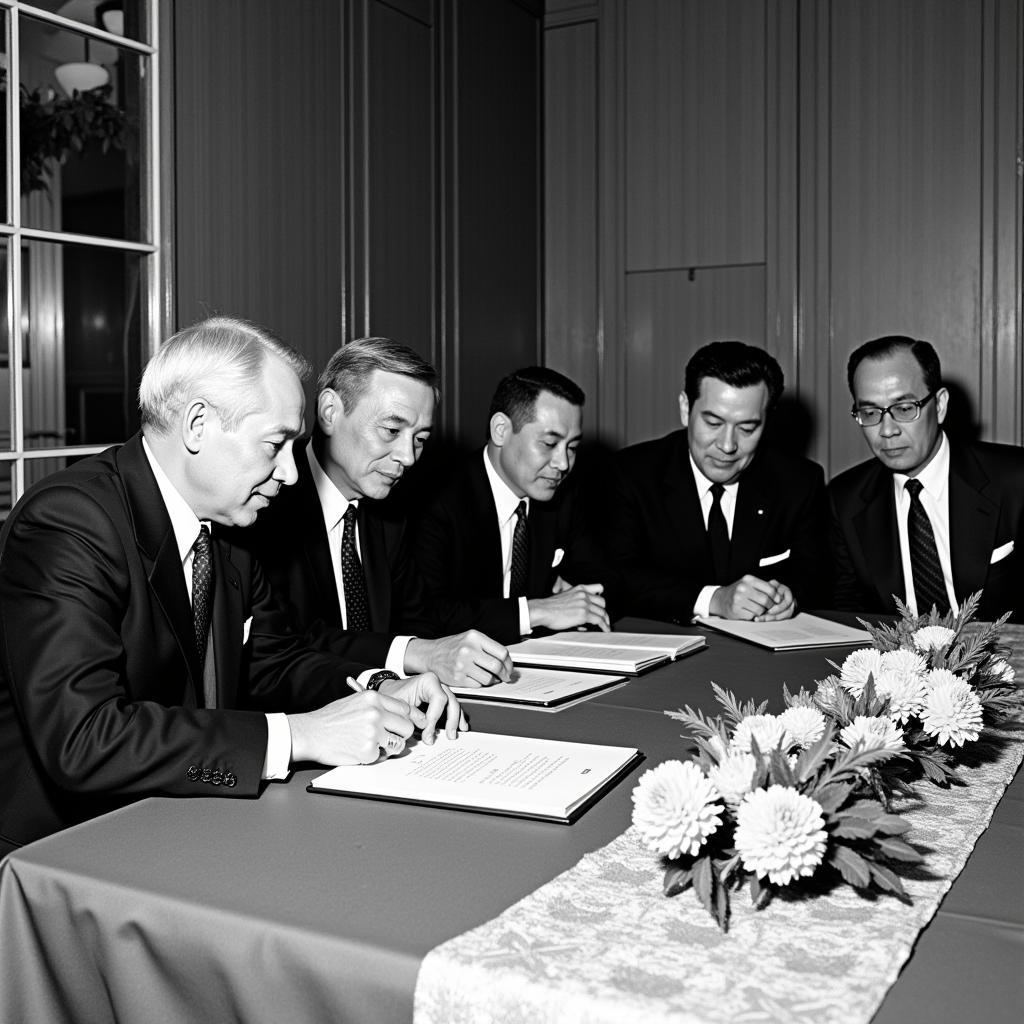ASEAN’s most value years are a topic of much debate, as different periods have contributed uniquely to the region’s development. From its inception in 1967 to its current status as a dynamic economic and political force, ASEAN has experienced remarkable transformations. This article delves into the key periods that have shaped ASEAN, highlighting its achievements and exploring the factors that have contributed to its success.
The Founding Years and Early Challenges
The late 1960s and early 1970s marked a period of significant political instability in Southeast Asia. The formation of ASEAN in 1967, amidst the Cold War and regional conflicts, was a bold step towards regional cooperation and stability. The five founding members – Indonesia, Malaysia, the Philippines, Singapore, and Thailand – laid the foundation for what would become a cornerstone of regional diplomacy and economic integration. While initial progress was slow, the focus on political stability and peaceful conflict resolution laid the groundwork for future growth.
 ASEAN Founding Fathers Signing the Bangkok Declaration
ASEAN Founding Fathers Signing the Bangkok Declaration
Overcoming Political Divides and Building Trust
One of the crucial achievements of ASEAN’s early years was the ability to bridge political divides and foster trust among member states. The diverse political systems and historical tensions presented significant challenges. However, the shared desire for regional stability and economic development helped overcome these obstacles. The signing of the Treaty of Amity and Cooperation in 1976 further cemented the commitment to peaceful coexistence and mutual respect.
Economic Growth and Regional Integration
The 1980s and 1990s witnessed a period of rapid economic growth in several ASEAN countries. This era saw the rise of the “Asian Tigers” and the integration of ASEAN into the global economy. The ASEAN Free Trade Area (AFTA) agreement, signed in 1992, played a pivotal role in reducing trade barriers and promoting regional integration. The growth of intra-ASEAN trade and foreign direct investment contributed significantly to the region’s economic dynamism.
Expanding Membership and Strengthening Ties
The expansion of ASEAN to include Brunei Darussalam, Vietnam, Laos, Myanmar, and Cambodia further strengthened the organization’s regional influence. This broader membership brought new challenges but also expanded opportunities for economic cooperation and cultural exchange. The establishment of the ASEAN Charter in 2008 formalized the organization’s legal framework and further solidified its commitment to regional integration. You can find information about ASE certified technician pay here: ase certified technician pay.
“The inclusion of newer members broadened ASEAN’s reach and created a more inclusive regional platform,” observes Dr. Amelia Tan, a prominent Southeast Asian economist.
Navigating the 21st Century
The 21st century has presented new challenges and opportunities for ASEAN. The rise of globalization, technological advancements, and geopolitical shifts have required the organization to adapt and evolve. ASEAN has continued to prioritize economic integration and regional connectivity, while also addressing issues such as climate change, cybersecurity, and sustainable development.
ASEAN’s most value years lie not in a single period, but in the cumulative progress made over decades.
“ASEAN’s strength lies in its ability to adapt to changing circumstances and maintain its focus on regional cooperation,” states Professor David Lee, a specialist in ASEAN affairs. He adds, “The organization’s most value years are a testament to the enduring commitment of its member states to shared goals.” More information about ASE certification test dates can be found here: ase certification test dates 2020. If you are interested in becoming an ASE master technician, you can find more information about certification here: ase master technician certification. Furthermore, for those interested in ASE Wang Gym, please refer to this link: ase wang gym. You can also practice for the ASE P2 test online here: ase p2 practice test online.
Conclusion
ASEAN’s journey has been marked by both challenges and triumphs. From its humble beginnings, the organization has evolved into a significant force in the global landscape. ASEAN’s most value years are a reflection of its enduring commitment to regional cooperation, economic development, and peaceful coexistence. The future of ASEAN remains bright, with continued potential for growth and integration.
FAQ
- What is ASEAN?
- When was ASEAN established?
- Who are the members of ASEAN?
- What are the main objectives of ASEAN?
- How has ASEAN contributed to regional stability?
When you need assistance, please contact Phone Number: 0369020373, Email: aseanmediadirectory@gmail.com, or visit us at Ngoc Lien Village, Hiep Hoa, Bac Giang, Vietnam. We have a 24/7 customer service team.